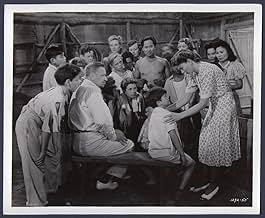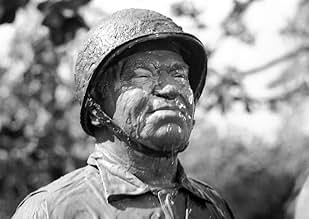Ajouter une intrigue dans votre langueWallace Beery stars in this patriotic World War II drama about a tough retired Marine who is caught in the middle of the Philippines campaign, experiencing action, heroics and tragedy. Gruff... Tout lireWallace Beery stars in this patriotic World War II drama about a tough retired Marine who is caught in the middle of the Philippines campaign, experiencing action, heroics and tragedy. Gruff Sergeant Bailey has never actually been in combat, but when the Japanese invade, the unte... Tout lireWallace Beery stars in this patriotic World War II drama about a tough retired Marine who is caught in the middle of the Philippines campaign, experiencing action, heroics and tragedy. Gruff Sergeant Bailey has never actually been in combat, but when the Japanese invade, the untested leader finally sees battle, ironically as a civilian in charge of organizing the citi... Tout lire
- Réalisation
- Scénario
- Casting principal
- Adjutant
- (as Noah Beery Sr.)
- Party Guest
- (non crédité)
- Sergeant
- (non crédité)
- Cpl. Anderson
- (non crédité)
- Junior Carson
- (non crédité)
- Big Boy
- (non crédité)
- Marine Corporal
- (non crédité)
Avis à la une
But that is also one of the things that makes it interesting. It is a glimpse into how people at the time were actually thinking. And while the "dirty japs" were portrayed as squinty, murdering savages we must remember that at the time it wasn't a completely unfair criticism.
The film is also unique in that it has a light "comedy" aspect to it. Wallace Beery manages something like an Archie Bunker quality. Probably much needed comic relief given that the news from the war was not always uplifting.
But the final thing one needs to keep in mind is the purpose of this film and ones like it. It was designed to unify the nation against a common enemy. And that is how wars are won. And if the worst thing that happens is our enemies are portrayed in a negative light, well that is hardly the worst thing that happens during wars.
Le saviez-vous
- AnecdotesThis film was first telecast in Los Angeles Thursday 11 April 1957 on KTTV (Channel 11); in Seattle it first aired 4 June 1957 on KING (Channel 5), in Chicago 18 June 1957 on WBBM (Channel 2), in Philadelphia 19 June 1957 on WFIL (Channel 6), in Portland OR 19 June 1957 on KGW (Channel 8), in New Haven CT 26 June 1957 on WNHC (Channel 8), in Altoona PA 3 July 1957 on WFBG (Channel 10), in Norfolk VA 7 August 1957 on WTAR (Channel 3), and in New York City 26 October 1957 on WCBS (Channel 2); in San Francisco it was first telecast 19 November 1958 on KGO (Channel 7). At this time, color broadcasting was in its infancy, limited to only a small number of high rated programs, primarily on NBC and NBC affiliated stations, so these film showings were all still in B&W. Viewers were not offered the opportunity to see these films in their original Technicolor until several years later.
- GaffesAt the time of the fall of the Philippines, US Marines would have been wearing the old-style Brodie helmets rather than the WWII M1 helmets used in the battle scene.
- ConnexionsEdited into La bataille de Midway (1976)
- Bandes originalesU.S. Marine Corps Hymn
(1868) (uncredited)
(also called "The Marines' Hymn")
Music by Jacques Offenbach from "Genevieve de Brabant" (1868)
Lyrics attributed to L.Z. Phillips (1919)
Main theme played often in the score and sung by marching bands
Meilleurs choix
Détails
- Durée1 heure 41 minutes
- Rapport de forme
- 1.37 : 1
Contribuer à cette page






































